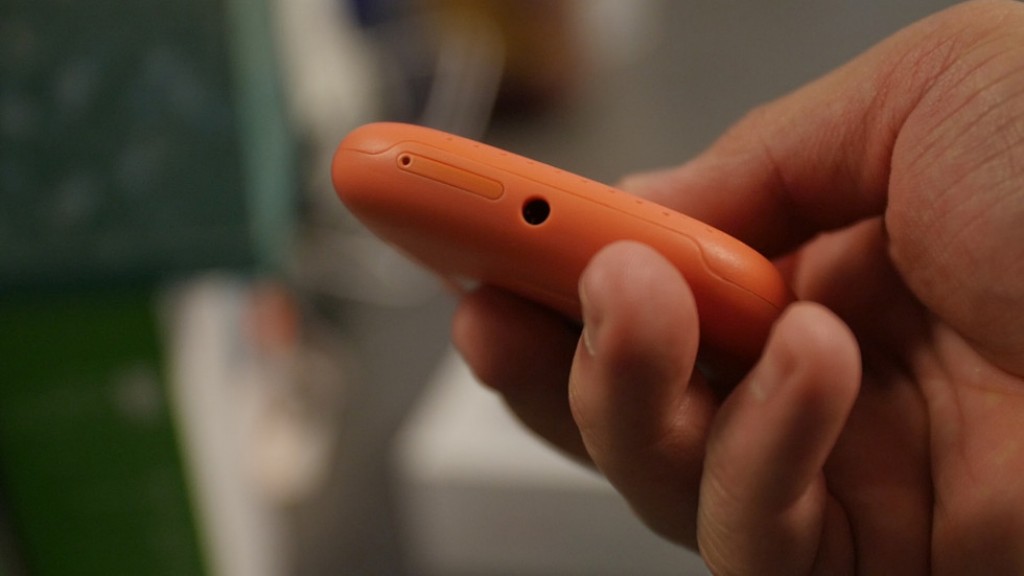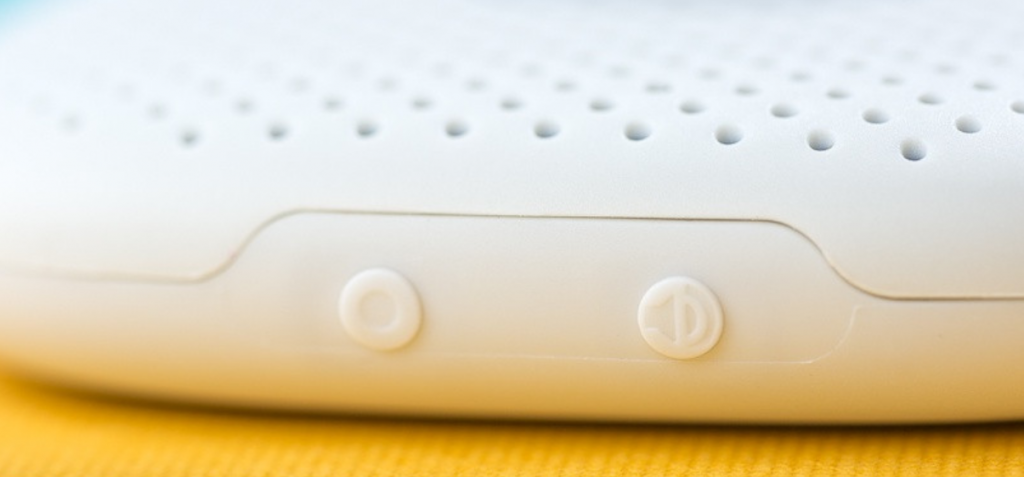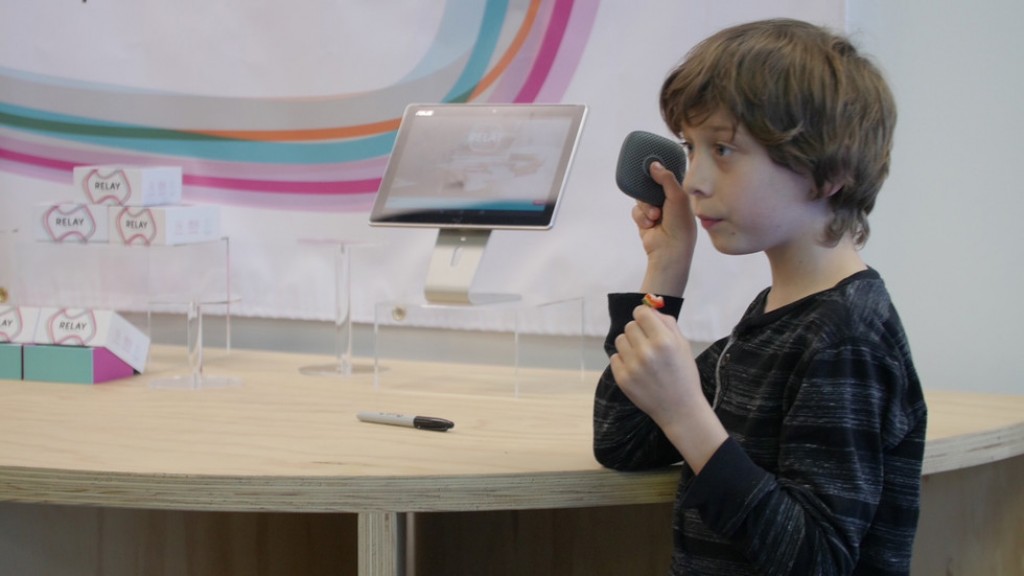
PROS
- Immediate communication plus GPS tracking.
- Rugged and water-resistant design.
- Low monthly fee.
CONS
- No 911 or emergency access.
- Can’t mix Relays and phones in friend groups.
- Unimpressive battery life.
BOTTOM LINE
- The Relay cellular walkie-talkie is a great way for kids to stay in touch with other kids and parents, without the distraction of screens.
Kids want to be connected. Kids and parents want to be connected. But parents may want their kids to be connected without screens. The latest communication device for kids, the screenless Republic Wireless Relay ($99), takes the idea of the walkie-talkie to the next level. It’s a fun device for kids to stay in touch with friends and parents, and may also find use among hikers, and groups who want to stay in touch without using their personal phones.
Since the Relay’s software isn’t fully baked as of this writing, we’re holding back on a rating until we see what the final build is like. But we’ve been playing with some Relays for two weeks now, with a bunch of kids between the ages of 9 and 13, and we think we have a pretty good idea of who it’s for.
To set the scene for you, check out our feature where we go inside the Relay’s development and talk about why this gadget might be a good idea for families.
Pricing and Design
The Relay costs $99 for one, $149 for two, or $199 for three, plus $6.99 per month per device for unlimited use. You pay Republic Wireless, which is a well-respected virtual carrier that has won our Readers’ Choice award several times. The device only works with Republic Wireless service, because it relies on a proprietary messaging server that Republic runs.

The Relay doesn’t look like a phone. It’s a little squircle, measuring 2.68-inch on each side and weighing just 2.5 ounces. It’s made of matte plastic in light blue, dark blue, charcoal, gray, or red. We prefer the colors other than gray—our gray unit ended up stained blue from a jeans pocket. There’s one big button on the top with a ring of LED lights around it, a headphone jack, and two buttons on the side for volume and changing channels (more on that later). It charges using a prioprietary, magnetic charging cable.
The device is moderately tough. It can handle being dropped or bounced on concrete. It’s water resistant but not waterproof, splashable but not dunkable. If you drop it in water and shake it off, or get caught in the rain, it’ll be fine; if you soak it for a while, it might not survive. Running it through the sink to wash it off, and tossing it hard onto a tile floor several times caused no problems.
The Relay itself doesn’t have any way to clip onto your clothes, but Republic Wireless is developing a clip and an arm strap that will be sold separately.
You can get two to three days of battery life with moderate use, which is just okay. The Relay won’t run out after a few conversations, but you’ll want to keep it charged when it’s home and not being used. I kept pulling mine out of a drawer to use it, only to find the battery had run down because I didn’t plug it in before putting it away.
Setup and Features
When you receive your Relay, you need to load an app on your Android or iOS phone to set it up. Each Relay reads out an activation code and gets paired with your app. In the app, you can then set up channels, each of which include different groups of Relays—for instance, “parent and child,” or “child and friends”—for the Relays to switch between.
You can also talk to Relays from the app or GPS locate Relays through the app, although the channel-adding and Relay-to-app communication functionality weren’t ready at the time of writing.

Using a Relay, for now, is really simple. Press the button and speak while you’re holding it down. Everybody else on the channel will hear what you’re saying, with a few seconds’ delay. If people try to talk over each other, they’ll either be queued up, or they’ll get told too many people are trying to talk.
When you get a message on a Relay, the device vibrates a bit and then just starts talking. It isn’t blaringly loud, but we had no problem using it outside. Voice quality is a bit scratchy, but certainly audible and comprehensible.
You might want to think of this as a phone, but don’t. It doesn’t have a phone number; it can’t call, or be called by, outsiders. It transfers all of its messages as encrypted voice-over-IP packets, which are not stored on Republic’s servers.
That’s safe and secure, but it also means there are serious limits here. Relays can’t call 911, and you can’t mix phones and Relays in groups of friends; the only phones they can contact are parents running the app.

If a kid wants to create a group with another kid in a different family, they have to physically bump their Relays together. The devices communicate via NFC, and the two kids’ parents get notifications in their apps asking for permission to form a group. At least that’s what’s supposed to happen—it wasn’t implemented in our early software yet.
Beyond talking, there’s an echo channel that repeats your words back to you in a silly voice. Republic Wireless intends to add music and voice assistant channels to the Relay in the future. I love the idea of the music channel, because my daughter used to go to bed to a soothing playlist every night. The Relay can hold one playlist of up to 16GB of local files, loaded from the parent’s smartphone app, which it can only play sequentially.
Google Assistant voice control functionality is even less baked and farther in the future. The idea here is to play games, play a broad variety of cloud-based music playlists, ask homework-related questions, or even get voice-powered walking directions.

Making Calls
When my daughter was seven or so, I bought a pair of Motorola Talkabout walkie-talkies so she could go down to the backyard behind our apartment building, or run around on the playground. But ultimately, in our urban environment, they didn’t work well—their quality and range just weren’t good enough.
The Relays, which use either the Sprint or T-Mobile networks, work much, much better. (Republic Wireless doesn’t discuss which networks it uses, but it will send you a unit with the best coverage for your area.) We didn’t have any trouble with coverage in urban or suburban areas. The devices have T-Mobile’s 700MHz band 12 for broad coverage, but not the new band 71 for extended rural coverage. They can also be connected, via the app, to a 2.4GHz 802.11n Wi-Fi network, for use in basement playrooms or the like.
Using the Relay to add independence or encourage cooperative play went perfectly, even better than giving my kid a phone does. The walkie-talkie’s immediacy was key. There’s no ring, fumble, pick up, as there is with phone calls—and no send-a-message-and-don’t-notice-it like you get with texts. You press the button and the other person’s walkie vibrates and blares, so I could say, “Hey, are you dawdling in the CVS toy aisle again?” and know she heard me.
My kid’s neighborhood friends used the Relays when they were splitting up around the neighborhood on a journalism project. The two teams could easily, quickly buzz each other to check in, without having to dial phones or check texts and get sucked into social media.
But using the Relay to stay in touch with faraway friends, or for more than organized activities, is trickier. Because the Relay has no texting or voice mail, you have to be there and be ready when someone wants to talk to you. It’s entirely synchronous. Yes, the kids in Stranger Things are used to that sort of thing, but kids and families in 2018 just aren’t. We sent one Relay to a close friend of my daughter’s who lives far away, and the two of them just couldn’t get their acts together to prearrange or schedule their conversations.

Comparisons and Conclusions
Many parents don’t want to get their kids smartphones, but want to be able to stay in touch with their kids for one reason or another. The next step down is a voice phone, but those are getting harder to find, can be called by strangers, and usually cost more than $7 per month to use. That said, the Kyocera Cadence LTE on Verizon and the Nokia 3310 3G on AT&T are good options there. For more, check out our story on The Best Phones for Kids.
Kid-oriented tracker wearables like the Verizon GizmoGadget are purely for parent-to-child communication. The Relay adds the possibility of communicating with friends, which is really compelling.
I can see this gadget fitting in easily in families with kids ages six to 10, especially kids in the suburbs where they may run across the street or down the block to their friends’ houses. Beyond parents and kids, I can see a real use for Relays in group activities that would otherwise rely on phones or walkie-talkies, like hiking, provided they’re in a place with Sprint or T-Mobile coverage.
We’re going to wait just a little while longer for all of the main software features to be ready before we give this a rating. Check back soon for our thoughts.
Source: pcmag.com









































